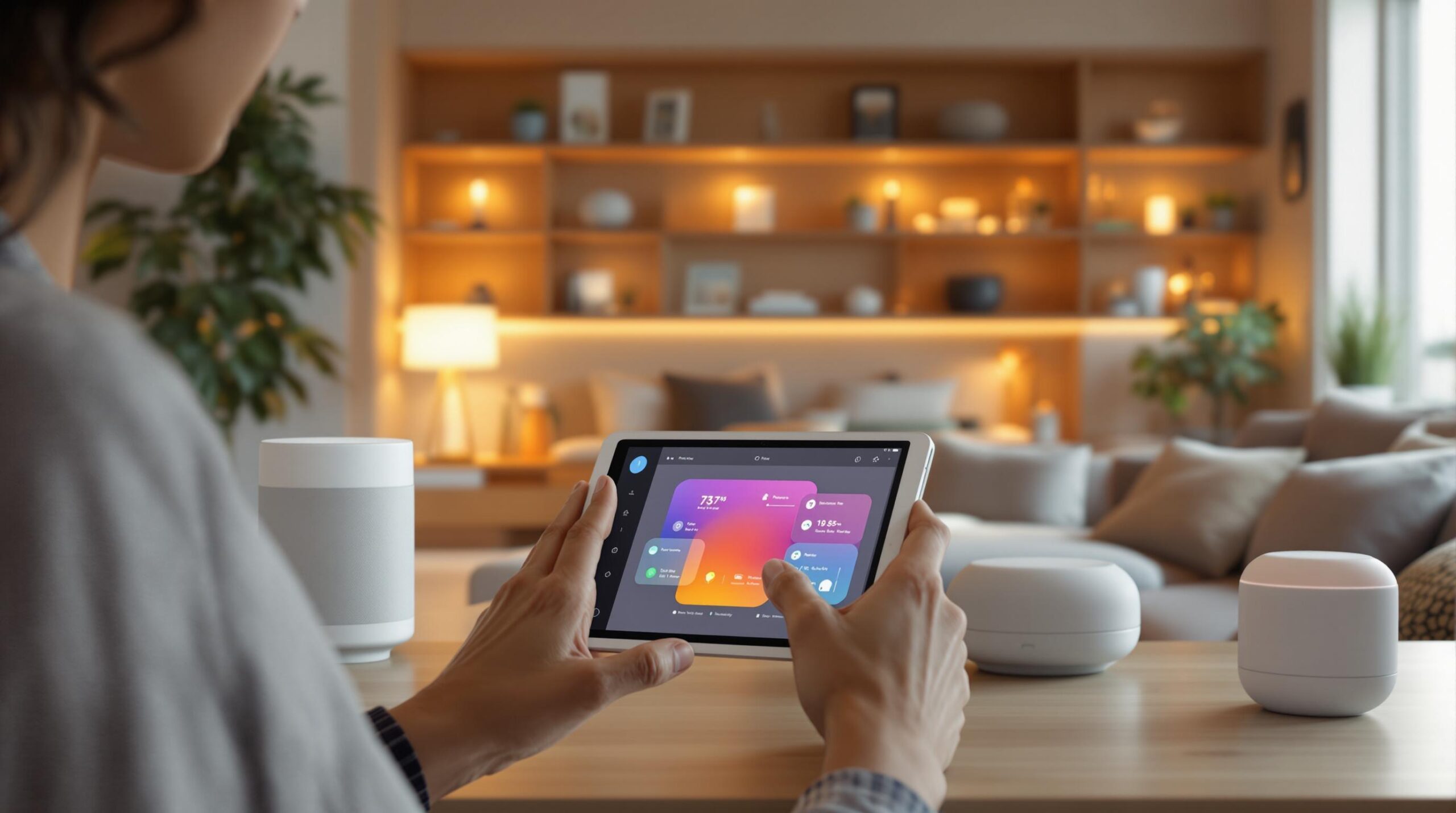
Smart hardware is only as good as the app that powers it. Even the most advanced devices can fail to meet expectations if paired with poorly designed apps. Here’s why this matters:
- Performance Issues: Bad apps can cause slowdowns, crashes, and drain battery life, especially for critical devices like medical equipment or industrial sensors.
- Underused Features: Many apps fail to utilize advanced hardware capabilities, leaving potential untapped.
- Poor User Experience: Confusing interfaces or unreliable functionality can frustrate users and harm trust.
- Security Risks: Weak app security can expose sensitive data and compromise hardware systems.
To avoid these pitfalls, focus on native app development, optimize for performance and usability, and conduct thorough hardware-specific testing. A well-designed app ensures your smart hardware operates at its full potential, delivering the seamless experience users expect.
Common App Problems That Limit Hardware
Speed and Resource Issues
Apps with inefficient code, bloated files, or poorly integrated client-server systems can overwhelm a device’s CPU and memory. This leads to faster battery drain, sluggish data transfers, and interruptions in real-time operations. Devices like medical equipment or industrial sensors, which rely on stable, long-term functionality, are especially vulnerable when these problems aren’t addressed.
Unused Hardware Features
Many apps fail to take advantage of advanced hardware capabilities. Features like specialized sensors, 3D scanning, or high-performance processors often go unused. For example, a healthcare device with multiple sensors might only run apps that utilize basic functions, leaving advanced capabilities untapped. To make the most of hardware, apps need to be designed to incorporate these features thoughtfully. Otherwise, performance gaps and design flaws remain intertwined, limiting the device’s overall potential.
Poor User Experience Effects
Bad interface design can further limit how effectively hardware is used. Some of the most common issues include:
| UX Problem | Impact on Hardware Usage |
|---|---|
| Poorly placed interactive elements | Makes one-handed use difficult |
| Unlabeled icons | Confuses users and hides advanced hardware features |
| Missing progress indicators | Leaves users unsure during data processing |
| Lack of landscape support | Reduces flexibility for different use cases |
"The public is more familiar with bad design than good design. It is, in effect, conditioned to prefer bad design, because that is what it lives with. The new becomes threatening, the old reassuring." – Paul Rand
When apps require lengthy tutorials or cause frequent crashes, users often blame the hardware instead of the app. This erodes trust in the device, especially in critical systems like medical or industrial equipment, where consistent performance is non-negotiable.
Building Better Apps for Smart Hardware
Why Choose Native App Development?
Native app development gives developers direct access to a device’s hardware, allowing apps to perform at their best. By using platform-specific languages like Swift (for iOS) or Kotlin (for Android), developers can tap into advanced hardware features seamlessly.
Here’s how native development benefits hardware-intensive apps:
| Feature | How It Boosts Performance |
|---|---|
| Direct API Access | Ensures instant response to sensor data and system events |
| Hardware Acceleration | Leverages the GPU for smoother graphics and faster computations |
| Memory Management | Allocates resources efficiently, reducing the risk of crashes |
| Battery Optimization | Uses native system calls to manage power consumption effectively |
These capabilities set the stage for improved app performance and smarter battery usage.
Tips for Better Performance and Battery Life
Tools like Android Studio Profiler can help spot memory leaks and CPU inefficiencies that might affect hardware performance. Here are some strategies to keep in mind:
- Efficient Memory Use: Choose optimized data structures and use object pooling to reduce garbage collection.
- Background Tasks: Use JobScheduler or WorkManager to handle non-essential tasks without draining resources.
- Faster Networking: Implement caching and HTTP/2 to speed up API calls and reduce latency.
Combining these practices ensures your app runs smoothly while conserving battery life.
Designing with Users in Mind
Maximizing hardware performance is only half the battle. A user-friendly design ensures that the app’s power translates into a great experience. To align the interface with both hardware and user expectations, focus on these touch-based design elements:
| Design Element | Best Practices |
|---|---|
| Touch Targets | Make buttons and controls at least 44×44 points for easy interaction |
| Gesture Support | Add intuitive gestures like swipes and pinches to enhance usability |
| Visual Feedback | Use clear animations to instantly respond to user actions |
| Flexible Layouts | Create responsive designs that adapt to different screen sizes |
Using tools like ConstraintLayout can help reduce layout inflation time, ensuring smooth performance across devices. Regular usability testing is essential to identify areas where the interface might fall short in leveraging hardware capabilities or meeting user needs. For apps with complex hardware features, introduce functionality gradually through progressive disclosure, and maintain consistent navigation patterns to build user confidence in the app’s integration with the device.
sbb-itb-7af2948
Quality Control and Updates
Hardware-Specific Testing Methods
Testing on actual devices helps identify performance issues and factors like network stability or temperature that might impact reliability.
| Testing Component | Key Focus Areas | Best Practices |
|---|---|---|
| Hardware Features | Camera, GPS, sensors | Test each feature both individually and in combination |
| Resource Usage | Memory, CPU, battery | Monitor usage under various conditions |
| Environmental Factors | Network stability, temperature | Test in diverse environments and conditions |
| Device Compatibility | Screen sizes, OS versions | Focus on the most commonly used device models |
When testing hardware, pay close attention to how your app interacts with critical features. For instance, if your app relies on GPS, test it in multiple scenarios – indoors, outdoors, in areas with weak signals, and while running alongside other location-based apps.
Use a mix of automated and manual tests to simulate real-world conditions:
- Set up automated testing with continuous integration pipelines.
- Design test scenarios that reflect typical user behavior.
- Track and document hardware-specific bugs and fixes.
- Test performance under varying battery levels and system loads.
This thorough approach ensures your app performs reliably across different devices and conditions.
App Maintenance Best Practices
Regular maintenance is key to keeping your app running smoothly and making the most of hardware capabilities.
| Timeframe | Maintenance Task | Purpose |
|---|---|---|
| Weekly | Performance monitoring | Keep an eye on resource usage and response times |
| Monthly | Security library updates | Ensure data protection remains up to date |
| Quarterly | Hardware compatibility checks | Support new device features |
| Bi-annually | Full system audit | Review all integrations comprehensively |
Testing beta OS versions early helps identify potential compatibility issues, ensuring your app continues to work seamlessly as new updates roll out.
To streamline maintenance:
- Automate monitoring to track hardware usage trends.
- Keep development libraries updated to support emerging hardware features.
- Maintain detailed documentation of hardware changes and how they affect performance.
These steps ensure your app stays reliable and responsive over time.
How to Manage and Optimize Mobile Applications
Conclusion: Matching App Quality to Hardware Potential
The digital health market is projected to reach $660 billion by 2025, making high-quality app development more important than ever. Real-world examples back this up: the University of Kansas Health System reduced diabetes readmissions by 45%, while UCSF achieved an impressive 97% diagnostic accuracy for heart rhythm issues.
But the benefits of quality app development extend far beyond healthcare. For instance, machine learning can increase user retention by up to 200%, and personalized experiences can boost revenue by 10–30%. To fully leverage hardware capabilities, organizations should focus on these strategies:
- Build apps natively to maximize performance
- Use AI tools to create personalized experiences
- Conduct thorough hardware-specific testing
- Regularly update apps and prioritize security
The future of smart device apps will depend on integrating with technologies like 5G and IoT. By focusing on app quality and aligning with hardware advancements, businesses can create standout user experiences and achieve measurable growth.
With nearly 70% of healthcare digital transformations failing – and breaches costing an average of $408 per record – investing in effective app development is not just smart; it’s necessary.

